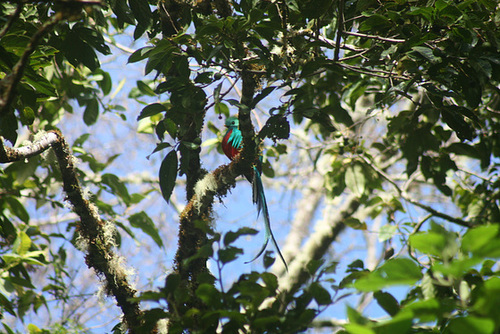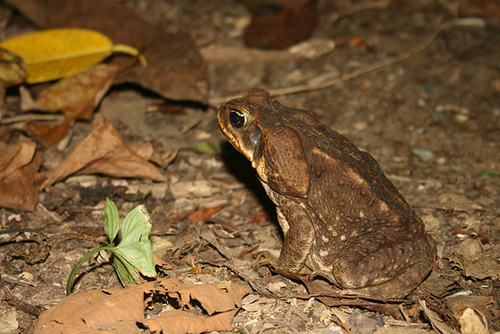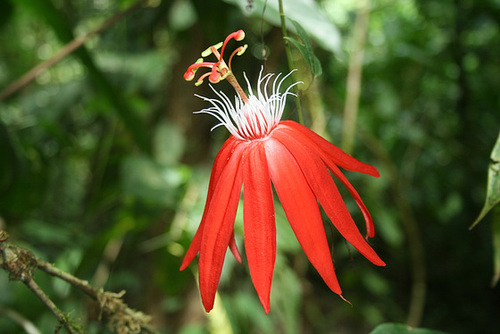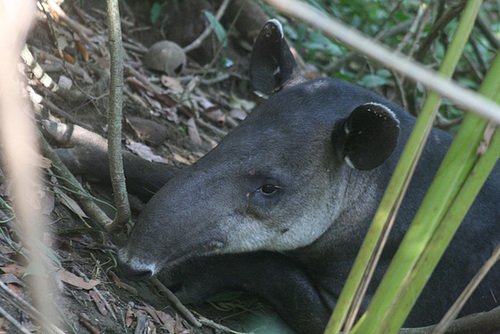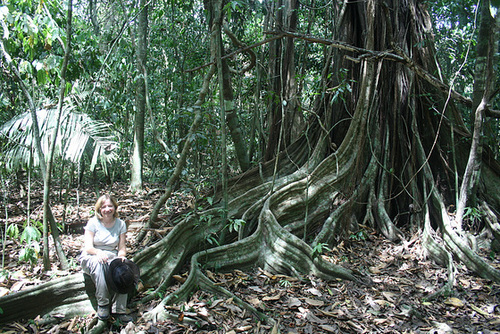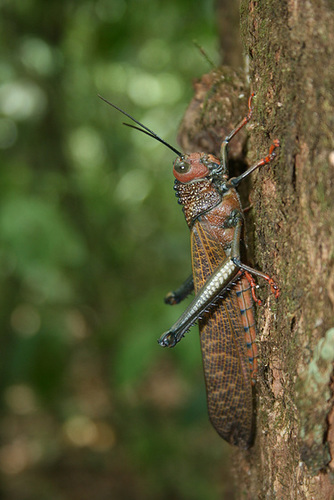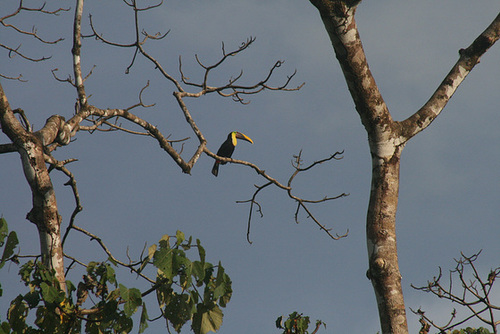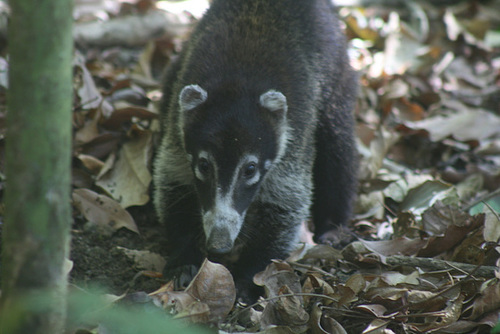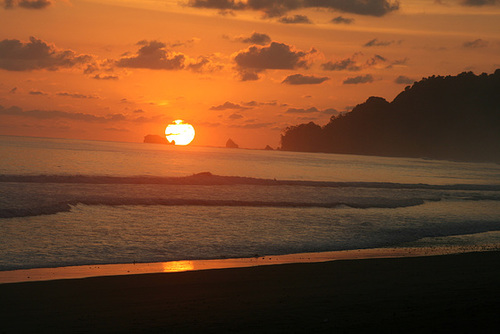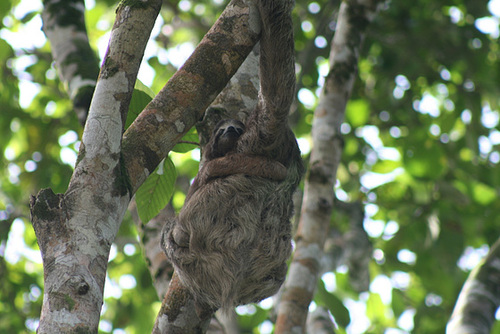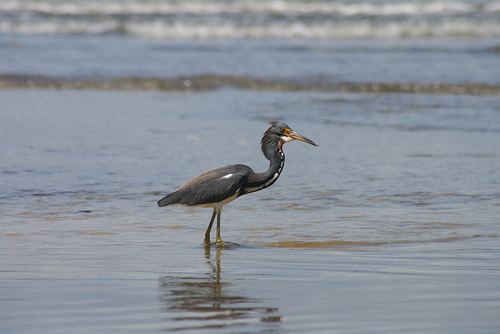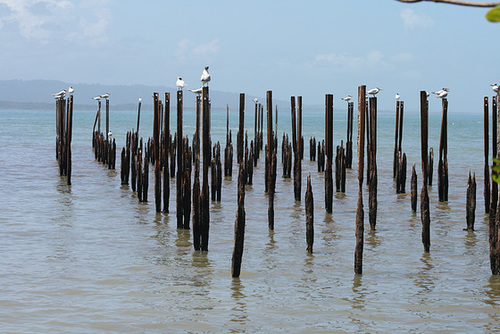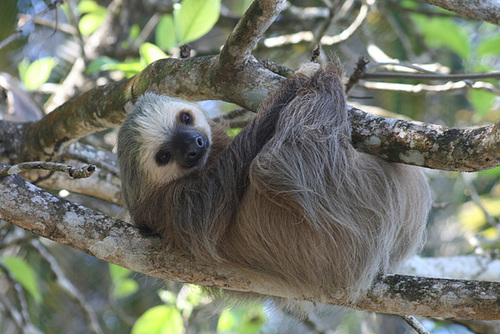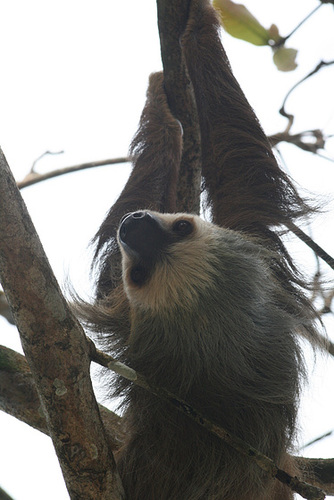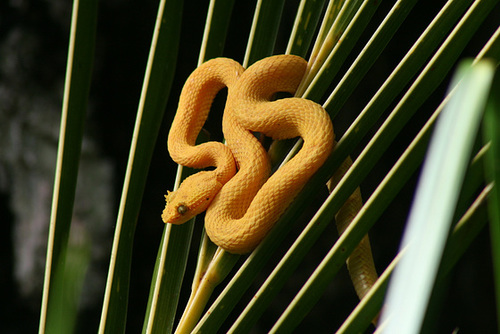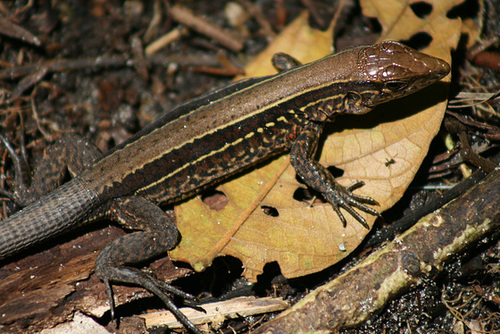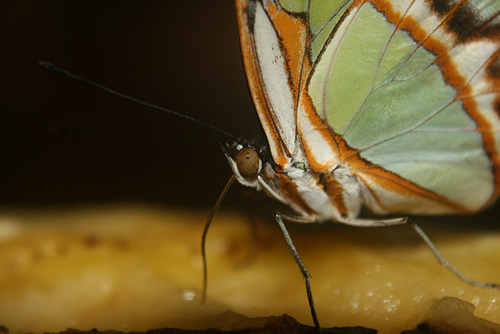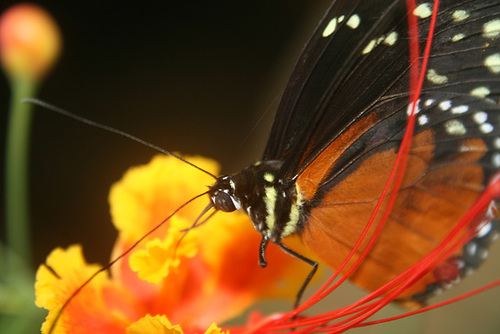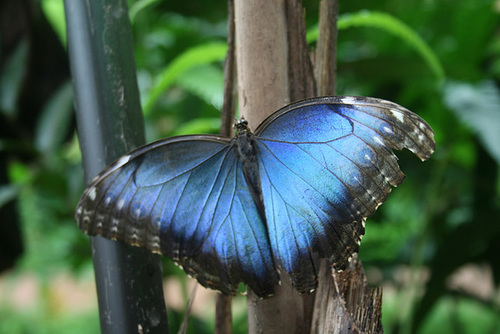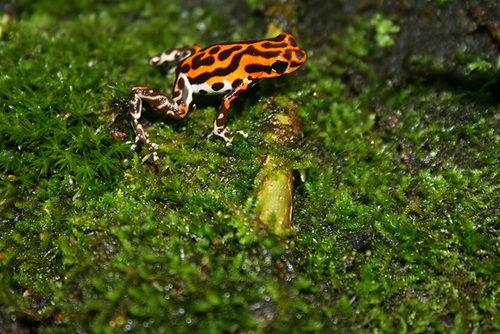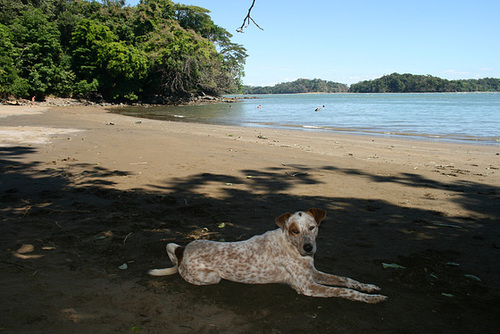6 to 9 Feb, 2009 – Boquete, Panama
We could see where the trail continued. Maybe 50 metres away, it continued beneath the canopy of trees, much like we had been following for the last couple of hours. Behind us, 4 or 5 kms of trekking. Ahead, 5 or 6. There was just one thing stopping us from continuing our walk on that tantalisingly close path. A bit of a mudslide. It appeared to have a life of its own, churning and groaning. The earth just kept flowing by where we stood, huge boulders just carried along by a river of mud that was just destroying all stability below. Every few minutes, when the rock, earth, and vegetation debris (including entire trees) was at a point where it could no longer be supported, then huge slabs of the mountain would slide off toward the river hundreds of metres below. Boulders the size of cars crashed end over end, filling the valley with sound of splintering and shattering on a huge scale.
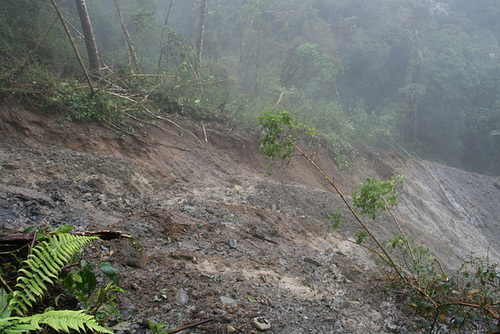
Mud Slide
The mud slide which prevented us from continuing and completing our trek.
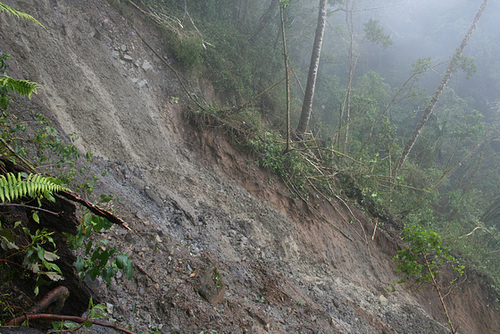
So Close
The trail continues, just over there...
It was raining. In this park, it has been raining for the last 4 days or more. But that is sort of to be expected, as it is rain forest after all. We took a bus from Boquete to David (1 hour) and then another to Cerro Punta (2¼ hours), and we entered the rain belt about 15 minutes before Cerro Punta. Undeterred, we took a taxi 5 km till the road became impassable, then walked 2 km in the rain to the trail head. Despite the rain and mud and crossing many little rivers, we remained basically dry, even our feet. However, from this point, it got harder and harder to stay that way. Soon, we were heading through some magnificently beautiful rain forest, but at times ankle deep in mud. We cautiously had to go around some bits where the trail had slid off in to the forest, and a few times had to walk in the rivers which had changed course to actually be the trail. We even had a few hands and knees muddy scrambles where steps had once existed but had since become victims of nature. None of this caused us sadness – the scenery was beautiful, and we laughed at ourselves with mud spattered up to our waists – what were we thinking? Oh, and we were past the point of no return, now, or so we thought!
Then we encountered the mudslide. It was so amazing to see such power and destruction caused by streams of water undermining the very foundations of the hillside. And although we looked for possibilities of going up through the forest and over the top, of the breach, it was not to be. Our hearts did sink. Not only would we have to backtrack the 4 or 5 kms we had already done, but we were also faced with the prospect of walking the extra 5 kms to Cerro Punta, as we would could not count on any traffic on that little road the taxi had brought us on. Then the two buses back. It did take some time, and food, to lift our spirits again, but in the end, we were happy, with yet another memorable experience. Especially once we got back to our room, hot shower, and dry clothes.
Boquete was a nice stop, all in all. Some rain, some sun, and hence lots of rainbows. We did a trip out to some more rustic hot springs nearby. The sun just baked down there – Boquete is in a little valley and has its own weather, and looking out the window gives no indication about what the conditions are like just 5 km away.

Another Rainbow
Boquete.

More Hot Springs

Bird, garden
Boquete riddle – When is a bus station not a bus station? When it's a bingo hall! Late on Saturday night, wanting to catch the early bus on Sunday morning, I headed to the bus station to inquire. There were 15 or so people with cards and tokens, and a man at the counter had a giant barrel with numbers. After calling 11 (which he did not call as “legs eleven” or even “piernas once”), the emcee looked up at me - “¡Diga me!” So I asked about buses in the morning. He answered while everyone waited patiently. As I walked out, he continued, “¡Venti-tres!” “¡Bingo!”, called the lady nearest the door. What I never worked out was if this is just where the locals came, or if someone thought it might be a good idea to fill in some time before the next bus left.
